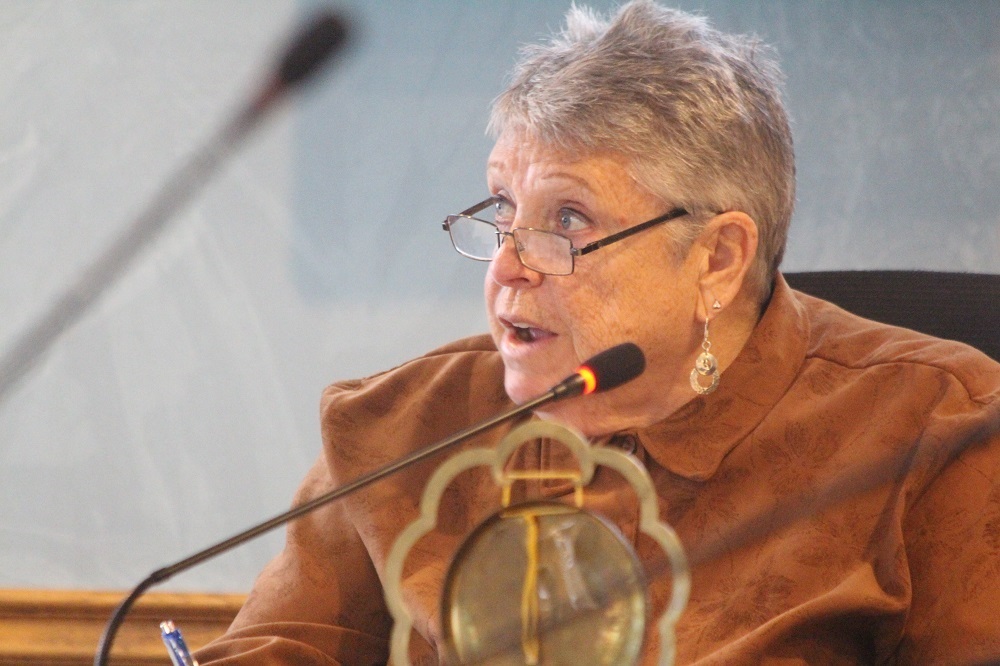Algonquin Highlands council has decided against supporting a proposed 60-metre cell tower to improve service around Oxtongue Lake, though the project isn’t completely dead in the water.
The tower, slated for installation at 4539 Hwy. 60, was discussed by council April 20. It is the latest proposal in the Eastern Ontario Regional Network (EORN) Cell Gap Project, aiming to increase cell phone coverage and capacity for 99 per cent of residents in eastern Ontario by 2025.
In a tied 2-2 vote, councillors Lisa Barry and Sabrina Richards voted against the application, brought forward by Rogers. The telecommunications giant is partnering with EORN and the provincial and federal governments on the $300 million project. Mayor Liz Danielsen and Coun. Julia Shortreed approved the proposal.
Deputy mayor Jennifer Dailloux recused herself from the discussion and vote, citing a conflict. Her home is approximately 150-metres south of the proposed tower location.
In the event of a tie, a motion is defeated.
Speaking to The Highlander following the vote, Danielsen expressed her disappointment over the decision. The mayor has been a vocal supporter of improved cellular and internet service in the past.
The issue was back on the agenda last week following a prior discussion March 16, where township planner Sean O’Callaghan recommended the project be approved. Council deferred a decision, calling on Rogers to address concerns levelled against a public consultation process the company initiated in February. Issues were also raised about the tower location.
Jason St. Pierre, EORN president, told council last week there are five new tower builds planned across Algonquin Highlands. So far, none have been completed.
He noted denial of a single tower could impact the whole project.
“If an area is denied and we are unable to find a suitable location to move it to, it creates a hole in the network. There will be a dark spot… an unserviced area,” he said.
Richards indicated she might be in favour of the tower build moving ahead in a different location. She asked how long it would take to find an alternate site, with Eric Belchamber, representing Rogers, saying it would take “months and months and months.” St. Pierre added that was time EORN didn’t have.
“For us to restart this process… it would be very challenging for us to meet our target goals,” he said.
Barry was hung up on the proximity of this proposed tower to several residences, highlighting municipal policy states any structure should be 1,000 metres away from any home. Belchamber said he feels that policy is outdated.
“When these protocols were enacted 10-plus years ago… that was when there were fewer users on the network, and people weren’t using HD data,” he said. “Placing a tower one kilometre away from where people live, work and play simply isn’t viable and will not achieve our coverage objectives.”
While she admitted to having some concerns over the location, Danielsen said she would support it “out of the greater good.
“There are more people that are going to be wanting this service than there are those concerned about it,” she said.
Shortreed said the denial was a major loss for students hoping to enroll in online classes from home.
“I know numerous kids who couldn’t get [into a college or university] residence so couldn’t go to school because of that. We must remember this effects people in different ways. Everyone should have the option to use this technology,” she said.
Municipal councils do not have the power to approve or deny these projects – that falls to Innovation, Science and Economic Development Canada. Belchamber noted the federal agency does take a municipality’s decision into account, but only when a valid reason is brought forward.
“If we had positioned this in a wetland or an area of natural interest, there were migration issues or butternut trees located on the site, there would be grounds to say [we’ve] found an inappropriate location… While some people may not want to see it or look at it, that extends beyond the jurisdictional role the municipality plays,” Belchamber said. “Based on the staff report [tabled by O’Callaghan], we’re not sure why concurrence wouldn’t be provided.”





